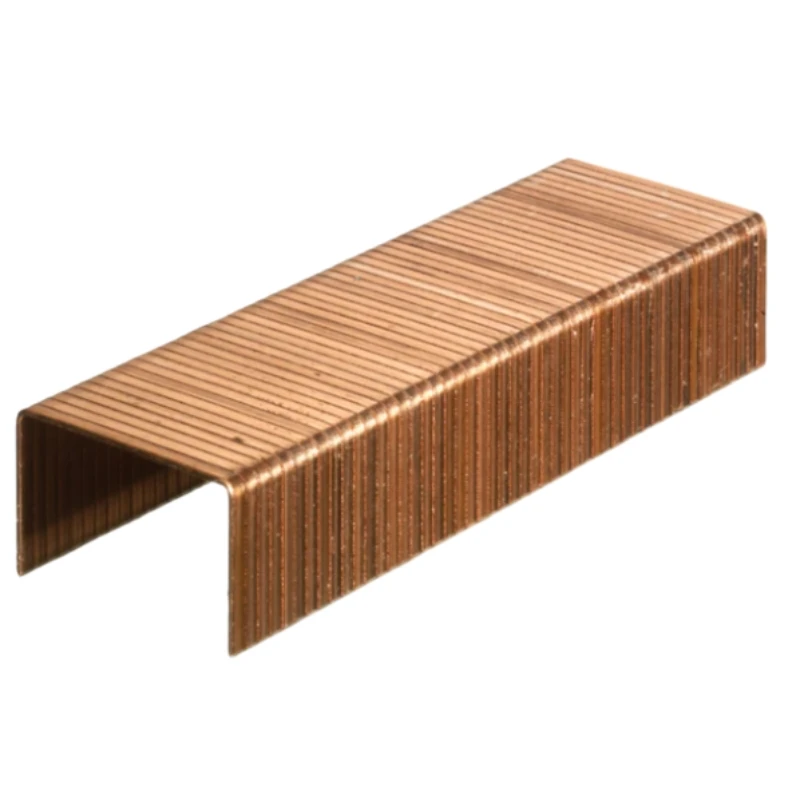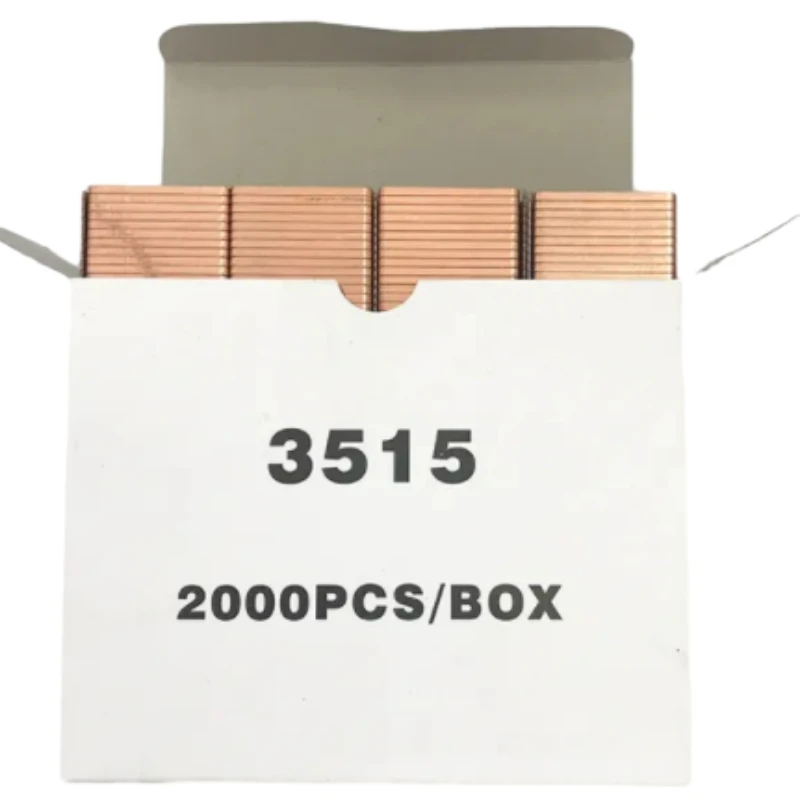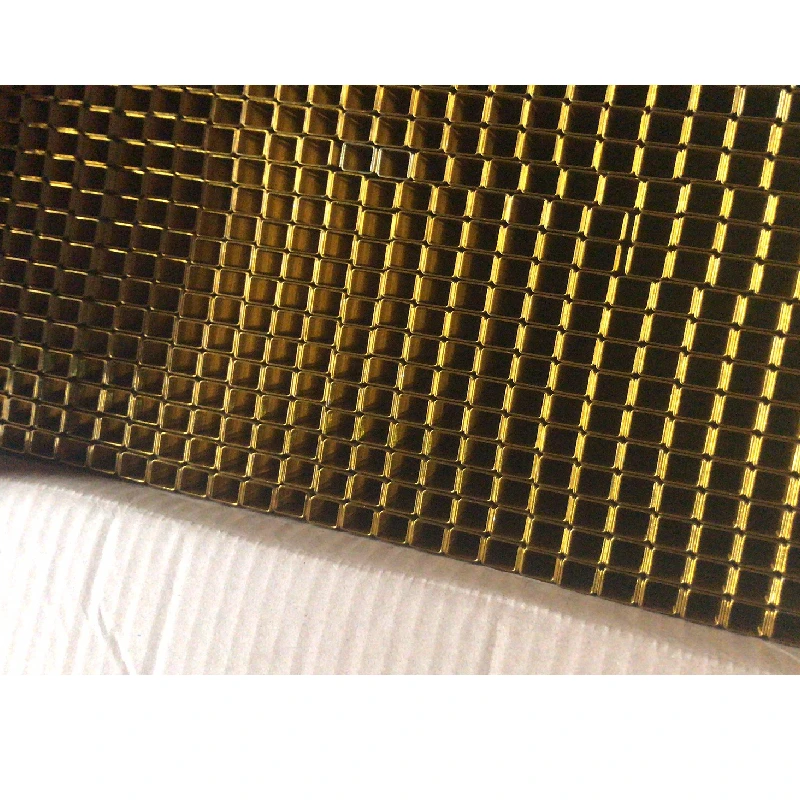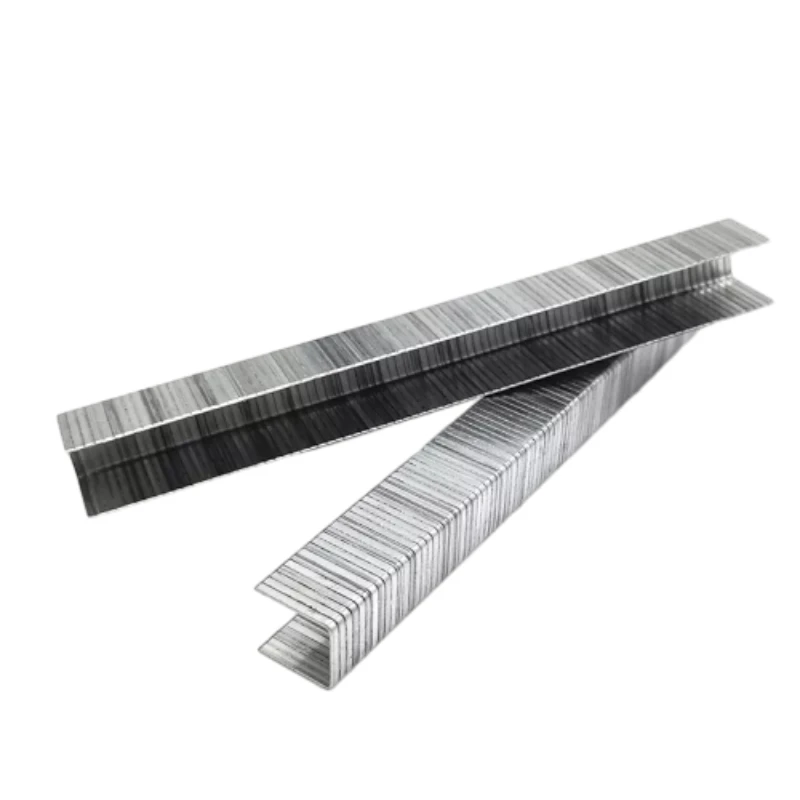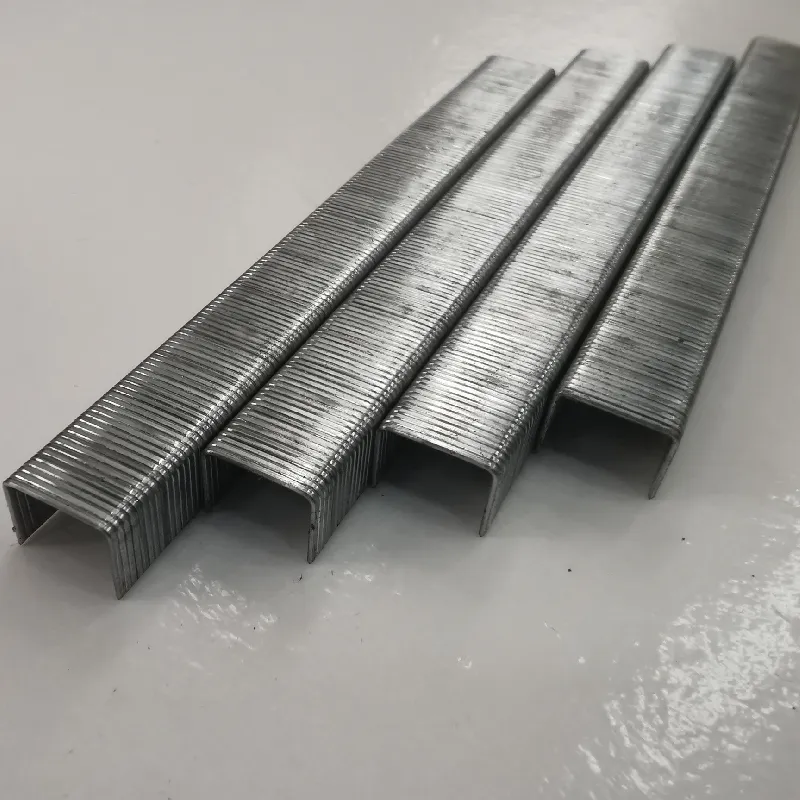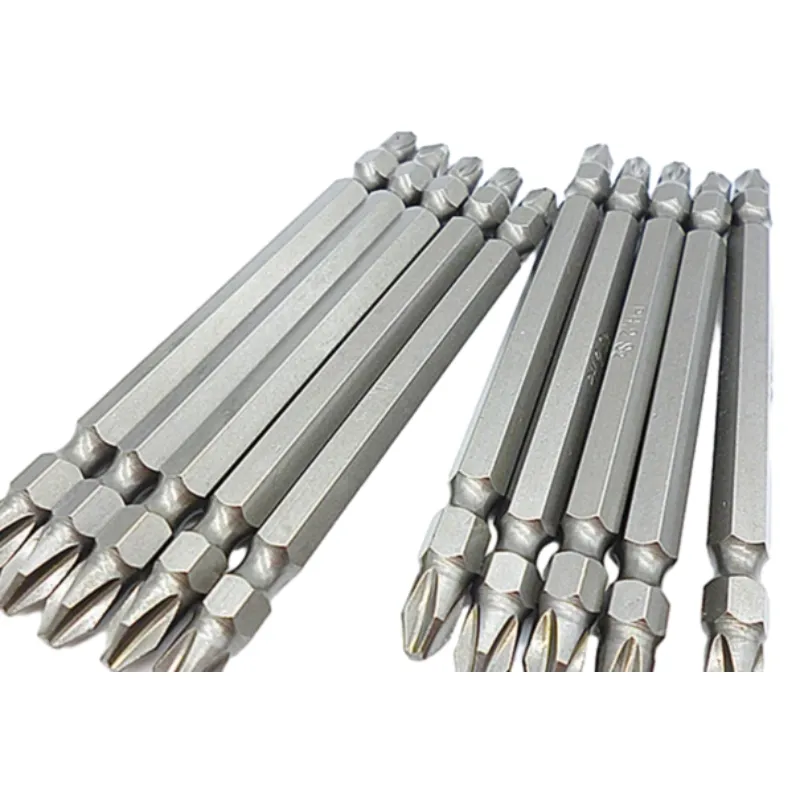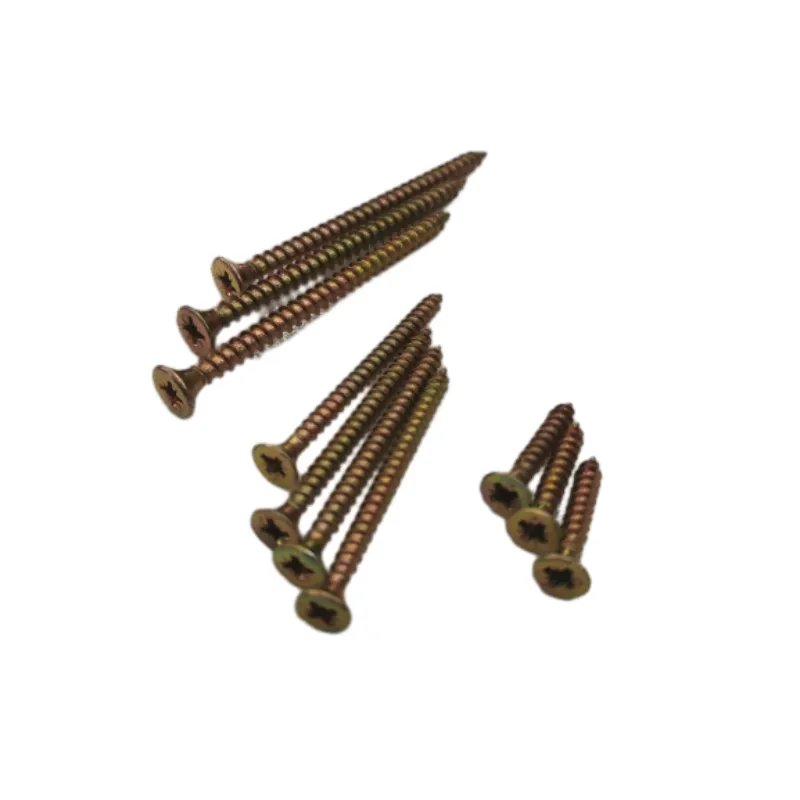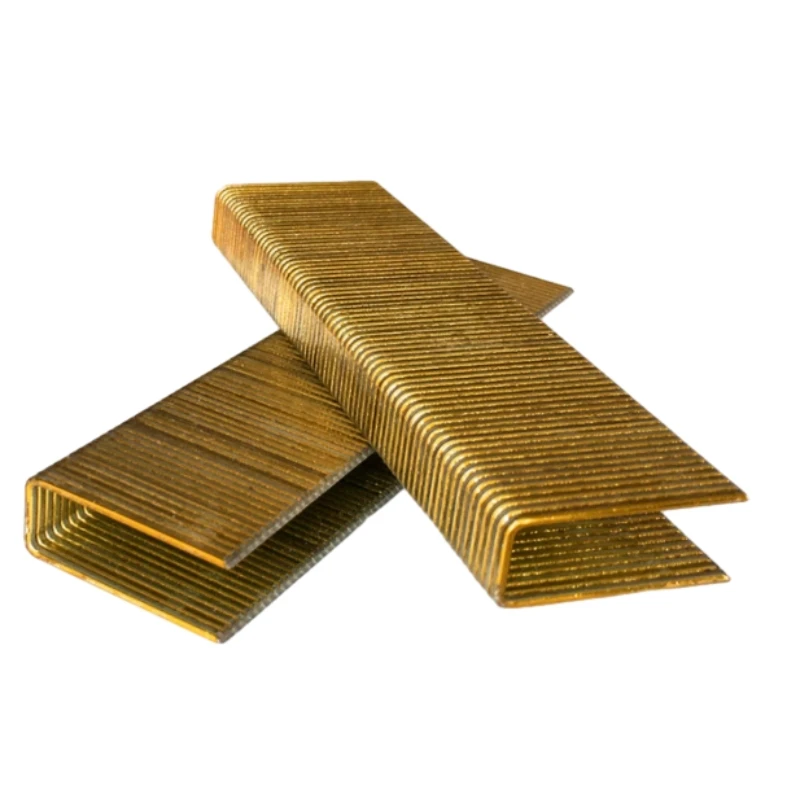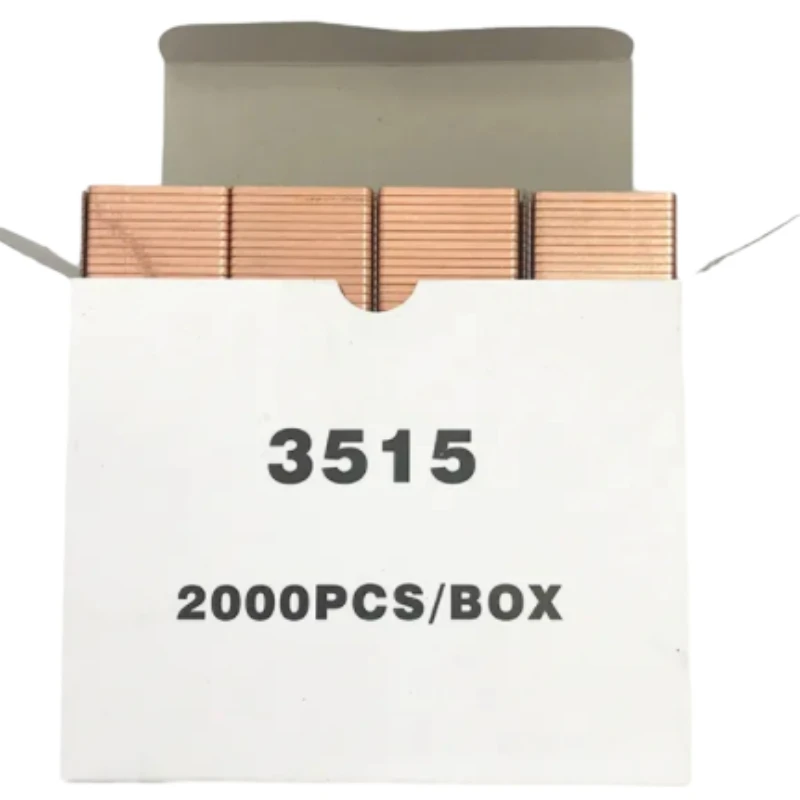ការបិទក្រដាសកាតុងធ្វើកេស
A carton closing staple is a specialized type of staple designed specifically for sealing and securing cartons, boxes, and packaging containers. Unlike standard office staples, carton closing staples are typically larger, heavier gauge, and often made from steel or galvanized steel to provide the necessary strength to hold together thick cardboard or corrugated materials. These staples are essential in industries such as shipping, warehousing, and manufacturing, where securely closing cartons is crucial to protect contents during transport and storage.
The primary function of a carton closing staple is to fasten the flaps of cartons firmly, preventing accidental opening or damage. They are commonly used with manual or pneumatic carton staplers, which drive the staples through multiple layers of cardboard quickly and securely. The durability and holding power of these staples ensure that heavy or bulky items remain safely enclosed, minimizing product loss or damage.
Carton closing staples come in various sizes and styles, including crown width and leg length variations, to accommodate different carton thicknesses and stapler types. Many are galvanized or coated to resist rust and corrosion, which is especially important for cartons stored in humid or outdoor environments.
Choosing the right carton closing staple depends on factors such as carton size, material thickness, and the method of stapling. Using appropriately sized staples ensures optimal holding strength without damaging the carton material. This improves packaging efficiency and maintains the integrity of shipments.
In summary, carton closing staples are indispensable fasteners in packaging operations, providing a reliable, efficient, and cost-effective solution to sealing cartons securely for safe handling and transportation.
What Types Of Carton Closing Staples Are Available?
There are several types of carton closing staples available, each designed to meet different packaging needs. The most common classifications include variations in crown width, leg length, wire gauge, and coating finish. Understanding these differences is important for ensuring the correct staple is used for specific carton thickness and material types.
The crown width refers to the width of the top part of the staple. It typically ranges from narrow (e.g., 1/2") to wide (e.g., 1-3/8"). Wider crowns provide greater holding surface, which is ideal for larger or heavier cartons. Leg length, on the other hand, determines how deeply the staple penetrates into the carton. Shorter legs are used for single-wall cardboard, while longer legs are better for double-wall or triple-wall corrugated cartons.
Carton closing staples can also be made from different materials, such as galvanized steel for corrosion resistance, or stainless steel for higher durability in harsh environments. The finish also plays a role in performance. For instance, some staples are resin-coated to increase holding strength after driving into the material.
There are stick staples used with manual or electric staplers, and roll staples (or coil staples) designed for high-speed, pneumatic carton staplers in industrial applications. Choosing the right format depends on the volume of packages being sealed and the equipment used.
In summary, selecting the correct type of carton closing staple improves packaging efficiency, enhances security during shipping, and minimizes damage or tampering risk.
How Do You Choose The Right Carton Closing Staple For Your Application?
Choosing the right carton closing staple involves evaluating several factors related to the packaging material, the stapling method, and the desired level of carton security. Using the wrong size or type can result in poor sealing, damage to the carton, or compromised product protection during transit.
First, assess the thickness of the carton. Cartons vary in construction, from single-wall to double-wall and even triple-wall corrugated board. Thicker materials require longer-leg carton closing staples to penetrate fully and clinch correctly. Using too short a leg may cause the staple to sit on top of the surface rather than securing the flaps properly.
Next, consider the crown width and wire gauge. Wider crowns are better for heavy or large cartons because they spread the holding force over a wider area, reducing the risk of tearing the cardboard. Heavier gauge wire (such as 15.5 or 16 gauge) offers more strength and is typically used for industrial or heavy-duty applications.
You should also take into account the stapling equipment in use. Different staplers support different staple types — for example, some require stick staples, while others are compatible with roll staples. Always ensure compatibility between the carton closing staple and your stapling tool.
Lastly, consider the environmental factors. If cartons are stored in humid or outdoor environments, galvanized or stainless steel staples are preferable due to their corrosion resistance.
In conclusion, selecting the right carton closing staple enhances packaging security, reduces damage risk, and boosts operational efficiency.
Why Are Carton Closing Staples Preferred Over Tape In Industrial Packaging?
In industrial packaging environments, carton closing staples are often preferred over adhesive tape due to their strength, speed, and reliability. While tape can be effective for light or temporary sealing, staples offer several clear advantages when packaging needs are more demanding.
First and foremost, carton closing staples provide a mechanical fastening that penetrates the flaps of the carton, holding them together even under significant stress. This is particularly useful for heavy or bulky items, where tape might peel or fail during handling and transit. Once applied, staples are not easily removed, which also serves as a tamper-evident seal — a critical benefit in logistics and warehousing.
Another reason staples are preferred is efficiency. In high-volume environments such as fulfillment centers or factories, pneumatic or electric carton closing staplers can seal boxes in seconds, with minimal effort and consistent performance. Compared to tape dispensers, which require more motion and precision, staplers are faster and more ergonomic for workers.
Additionally, carton closing staples are unaffected by dust, moisture, or low temperatures, unlike tape, which can lose adhesion in certain environments. This makes staples ideal for packaging in refrigerated areas, outdoor shipments, or rough handling scenarios.
Lastly, staples are cost-effective in the long run. Although the initial equipment investment may be higher than tape dispensers, the low cost per staple and increased productivity offset these expenses.
In summary, carton closing staples offer unmatched durability, security, and speed, making them the go-to solution for industrial-strength packaging needs.














































































































